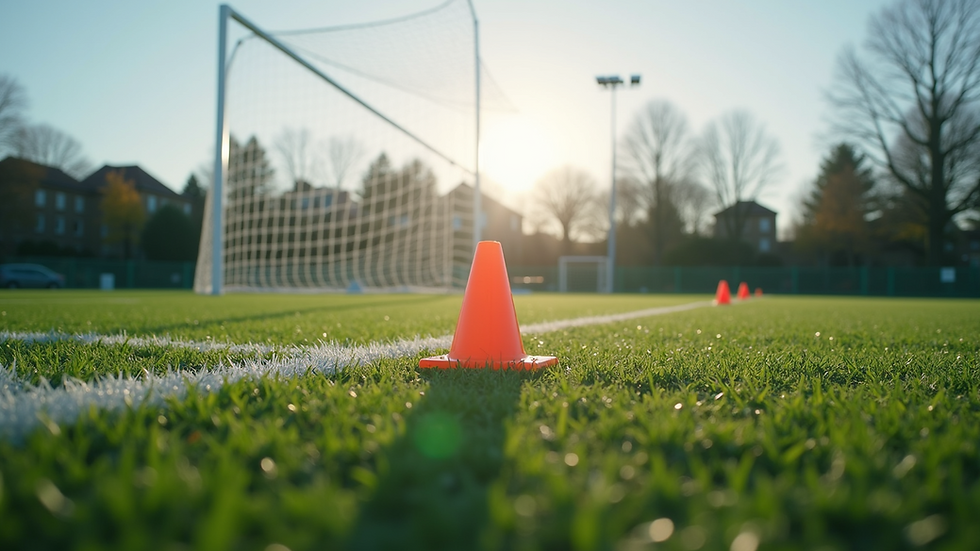Redefining Toughness in Youth Sports: Player development without fear.
- Lindsay van Kessel

- May 27
- 3 min read

In recent years, youth sports in Canada have seen a disturbing shift. The excitement of competition is crucial, but the boundary between toughness and recklessness is fading. Dangerous tackles, late challenges, and a relentless “win at all costs” attitude are overshadowing player development and enjoyment. This trend is not just dangerous; it also harms our young athletes, who should thrive in a safe and supportive environment.
Fear vs Creativity
What does toughness mean in youth sports? Toughness should not be seen as reckless aggression or dangerous play. It should represent courage and smart decision-making—qualities that help mold well-rounded athletes. Statistics show that injuries from overly aggressive play are on the rise, creating a culture of fear rather than creativity and growth.
Physical, Not Reckless
We’re not asking players to hold back.We’re asking them to play with purpose.
Strong, physical play has a place in soccer — but it must serve the game, not harm it.
Can we teach players the difference between competitive bravery and reckless danger. The goal isn’t to avoid contact — it’s to challenge with intelligence, timing, and intent to win the ball.
The Injury Crisis
The numbers are telling. According to the Canadian Institute for Health Information, over 135,000 children and youth are treated in emergency departments each year for sports-related injuries. Soccer, one of the most popular youth sports, is a significant contributor due to aggressive practices. For instance, in a recent survey, 56% of youth soccer players reported having been injured from reckless tackles meant to assert dominance on the field.
These injuries are not just physical; they take a toll on mental well-being. Young athletes may start to dread play, becoming anxious about potential injuries. This fear threatens both individual athletes and the sport's future.
Teaching Bravery Over Brutality
Do we need a cultural overhaul? Instead of celebrating aggression for the purpose of intimidation, everyone—from coaches to parents—creating an environment where young athletes can feel safe to express their skills. What does this look like?
Decision-Making as a Foundation
Real growth in athletics comes from effective decision-making. Athletes must learn when to take risks and when to play it safe. Practice should focus on scenarios where players must navigate pressure without resorting to dangerous plays. For example, sessions that emphasize strategic thinking can help youth athletes develop not just as players, but also as conscientious individuals.
Emphasizing Creativity
Encouraging creativity on the field isn't just important; it should be a goal. When young athletes are allowed to experiment with their skills, they build the confidence to try new strategies. An environment where players feel safe to try is essential for their development. Consider that players who value creativity in their game are more likely to adapt quickly during competitive play and less likely to engage in reckless behavior.
Creating a Supportive Culture
The impact of coaches and parents and officials in this cannot be overstated. Coaches must model respect, sportsmanship, and safety. They should design age-appropriate training that includes injury prevention and educates athletes about the consequences of reckless actions.
Leading by Example
The message about safety must extend beyond the playing field. Coaches and parents should have discussions around the importance of safety and challenge outdated notions of toughness. This change begins at home; when parents emphasize personal growth, skill development, and love for the game, children are more likely to adopt these values.
For instance, when parents encourage their kids to focus on team over individual, children learn that the game is about more than just winning.
Protecting Our Players and the Game
We must prioritize the safety of our players, allowing them to enjoy soccer without fear of injury. Creating a positive culture around youth sports is not just essential for young athletes; it's crucial for the sport's longevity.
A Vision for the Future
👉 The future of soccer in Canada hinges on our ability to create a culture that values creativity, intelligence, and respect.
By prioritizing player safety and development, we elevate the entire game — for everyone.
If we create skilled athletes who play with heart, we build better athletes and better people. Shouldn't that be at the core of youth sport?







Comments